Rock beds aren’t just there to sit quietly under your shrubs like shy introverts at a party. They’re the unsung heroes of curb appeal, the guardians of drainage, and the sculptors of outdoor charm.
You’re here because you’ve either got a naked foundation crying out for help, or perhaps the soil around your home simply can’t be tamed with grass. Either way, rock beds can work some serious magic.
Whether you’re looking to solve drainage issues, add texture and contrast, or just want something low-maintenance and timeless, I’ve pulled together 18 tried-and-true ideas for using rock beds around your house that’ll make you want to pick up a shovel—or at least hire someone who will.
1. Modern Linear Rock Beds Along the Foundation
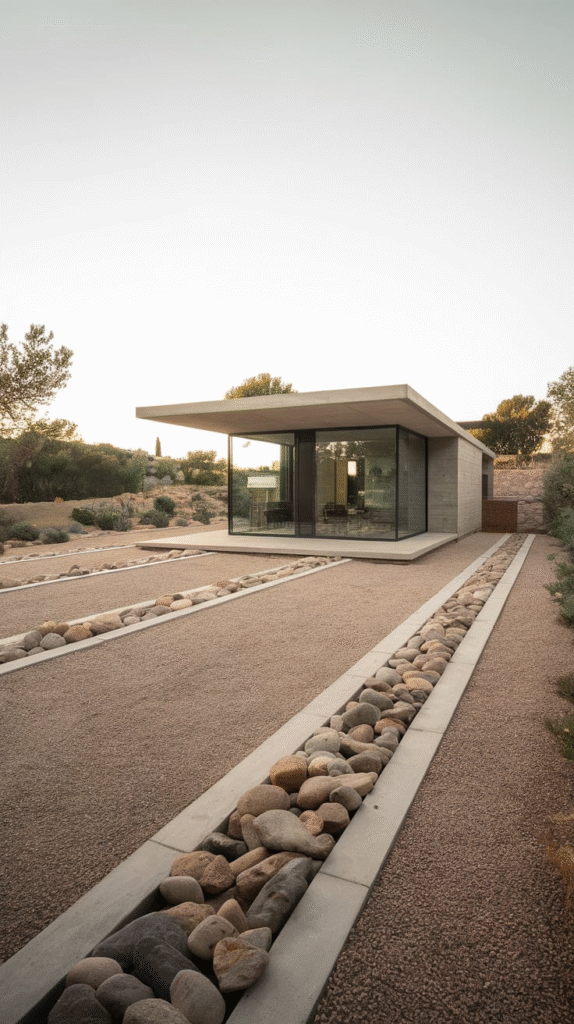
Sometimes the sleekest designs are the simplest. Picture a narrow trench of crisp white Mexican beach pebbles running parallel to your home’s foundation. The rocks serve both form and function: they enhance modern aesthetics and allow rainwater to drain away from the base.
I used this approach when revamping a friend’s mid-century modern ranch. The straight lines paired with the dark exterior siding made the entire space look like it belonged in a design magazine. We also planted a few low boxwoods to punctuate the rocks, and voilà—instant elegance.
Pro tip: Lay down a weed barrier and use edging to keep the look clean over time.
2. Mixing River Rock with Mulch for Visual Contrast
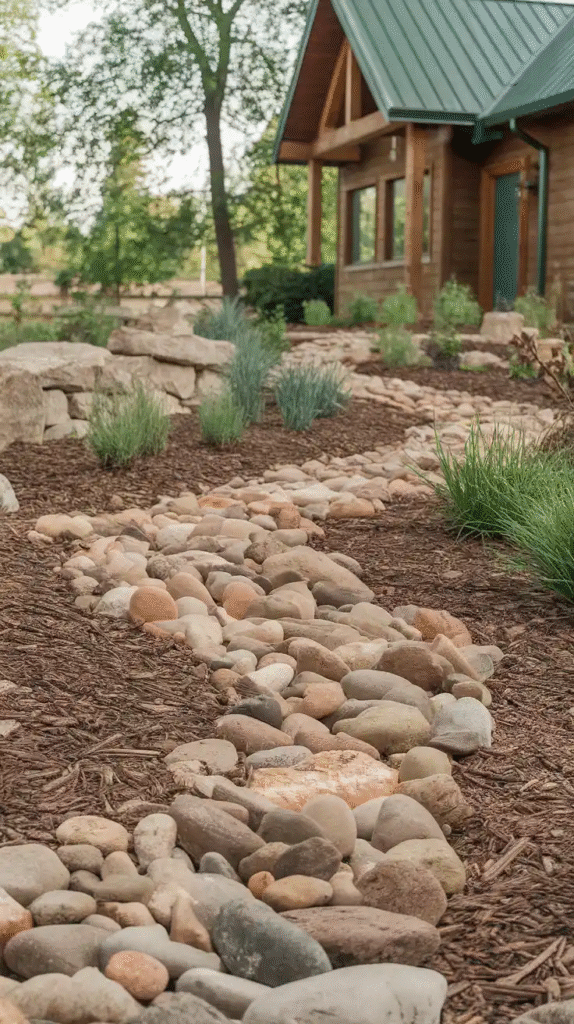
If you’re not ready to commit to full-rock beds, mixing river rocks with dark brown mulch can give you contrast without going all-in. Use rocks around the perimeter or near the downspouts where erosion is an issue, and mulch the rest.
This was my go-to fix for a soggy area near my garage. Not only did the rocks stop my mulch from washing away, but the subtle pattern created by the transition from rock to bark made it look thoughtfully designed.
3. Dry Creek Bed Around the House Perimeter
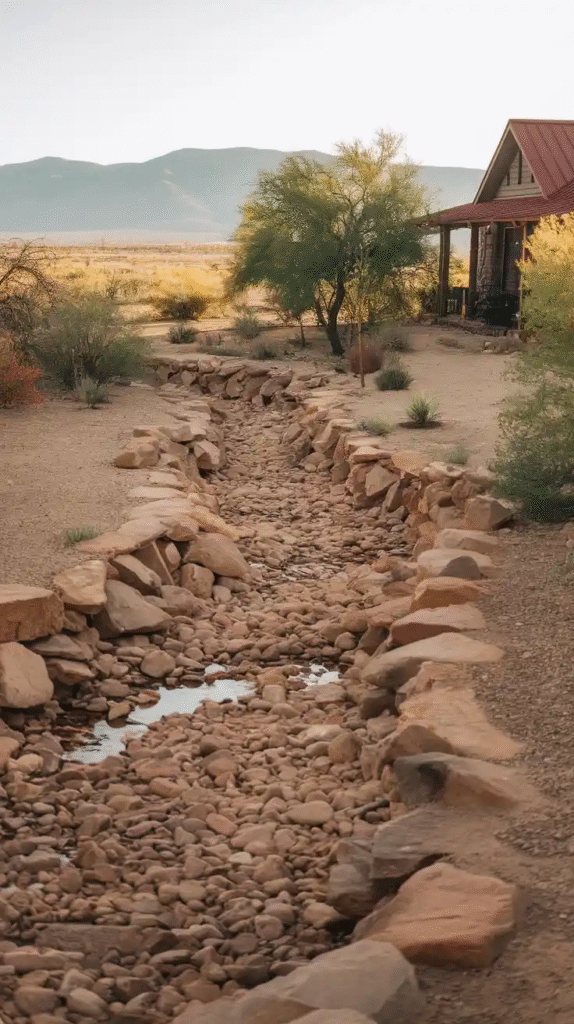
Think of this as landscaping’s version of a secret drainage system that looks way better than a French drain. A dry creek bed meanders around the house, mimicking a natural stream using a mix of large and small stones.
I created one around a sloped corner of my aunt’s backyard where water always pooled. We edged it with taller grasses like blue fescue and planted some irises along the bends. Now it looks like a babbling brook in the middle of a fairy tale forest—even though it never sees water unless it rains.
4. Lava Rock Beds for a Bold, Rustic Look
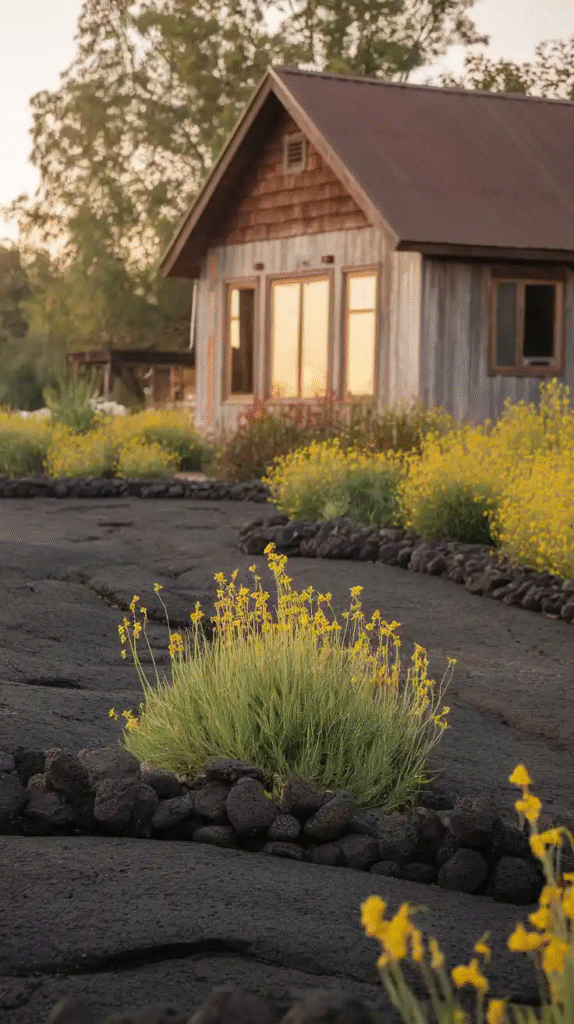
Want drama? Try red lava rocks. These volcanic pebbles offer striking color contrast and texture, especially next to beige or light-colored siding. They absorb sunlight, so they’re great for keeping weeds at bay.
I helped a neighbor create a desert-inspired front bed using these and some chunky cacti. Every time I walk by, I feel like I’m in Arizona—without the 115-degree heat.
5. Zen-Inspired Rock Beds with Raked Gravel
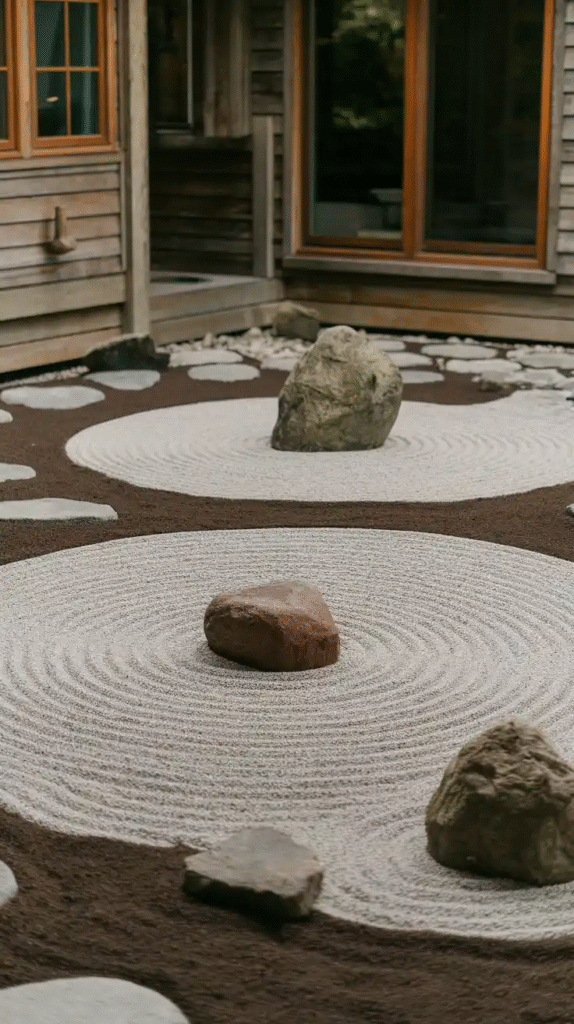
Let your yard channel its inner meditative monk with a Zen rock garden. Use crushed granite or pea gravel, rake it into calming patterns, and add a few larger boulders or a minimalist lantern for effect.
I once helped a friend with a chaotic work schedule build one of these in a narrow strip between her fence and the house. She now refers to it as her “serenity lane” and says just seeing it makes her exhale more deeply.
6. White Marble Chips to Brighten Shady Sides
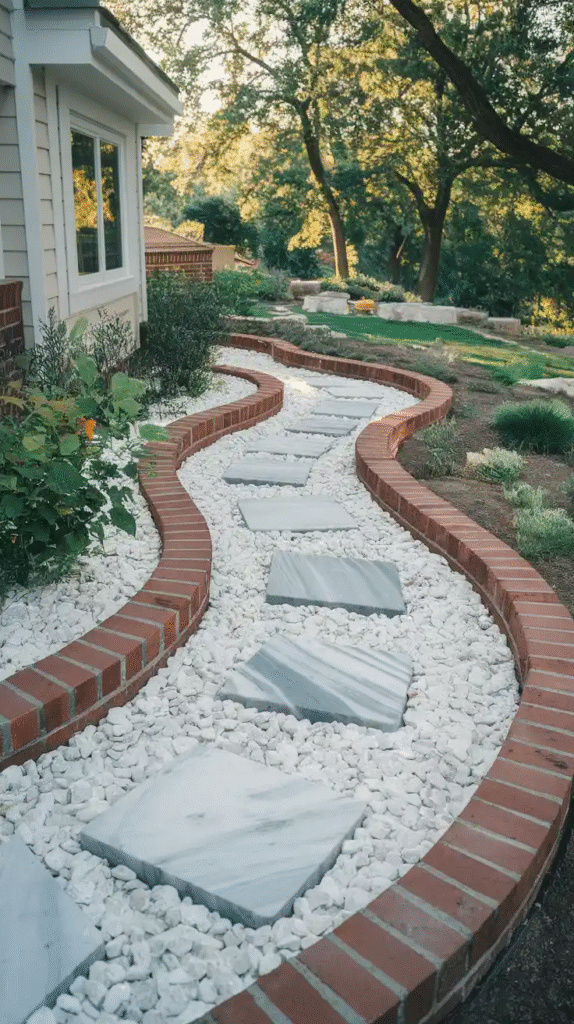
Got a side of the house that never sees the sun and looks perpetually glum? White marble chips are your answer. They reflect light and brighten those shadowy spots, making them feel more open and intentional.
We used this trick under the eaves of a north-facing wall, and the effect was like someone turned on a floodlight. Bonus: it helped deter neighborhood cats from using it as their private litter box.
7. Boulder Accents in Rock Beds for Texture
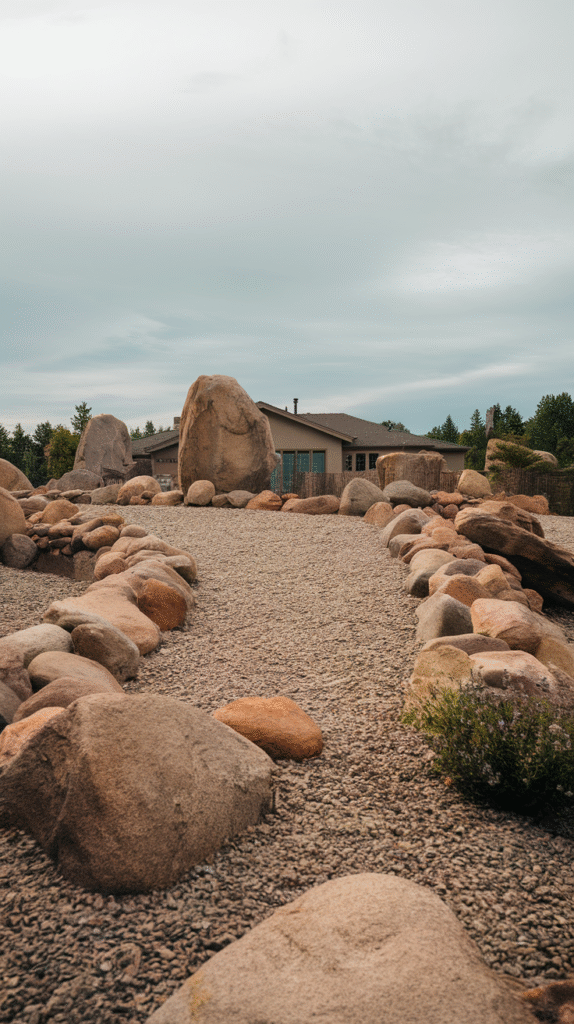
Too much uniformity can get boring. Adding a few large boulders to your rock bed brings in needed texture and makes the space feel more natural and dimensional.
Choose boulders that match your local geology or house color palette. Nestle them into your bed as if nature left them there, and consider surrounding them with ornamental grasses or sedums for a finished look.
8. Rock Beds with Drought-Tolerant Plant Pairings
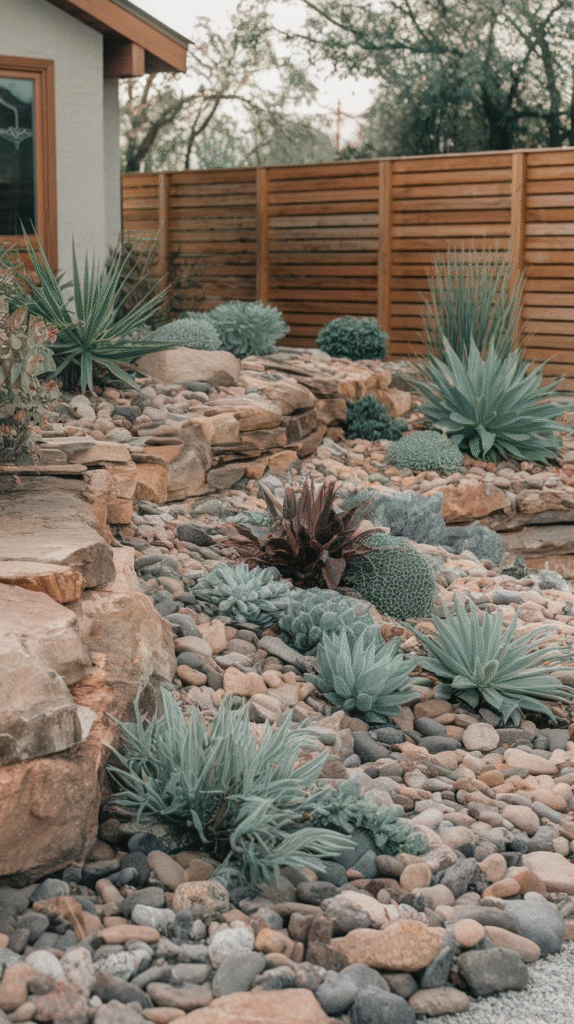
Rock beds shine when paired with drought-tolerant plants like sedum, lavender, thyme, or agave. Not only are you reducing water usage, but the contrast between soft greens and solid rock creates a designer feel.
I did this along a south-facing wall that got scorched by afternoon sun. I planted low-maintenance stars like creeping thyme between flagstones, added a few gray river rocks, and now it’s one of my favorite outdoor zones.
9. Edged Rock Beds with Pavers or Steel
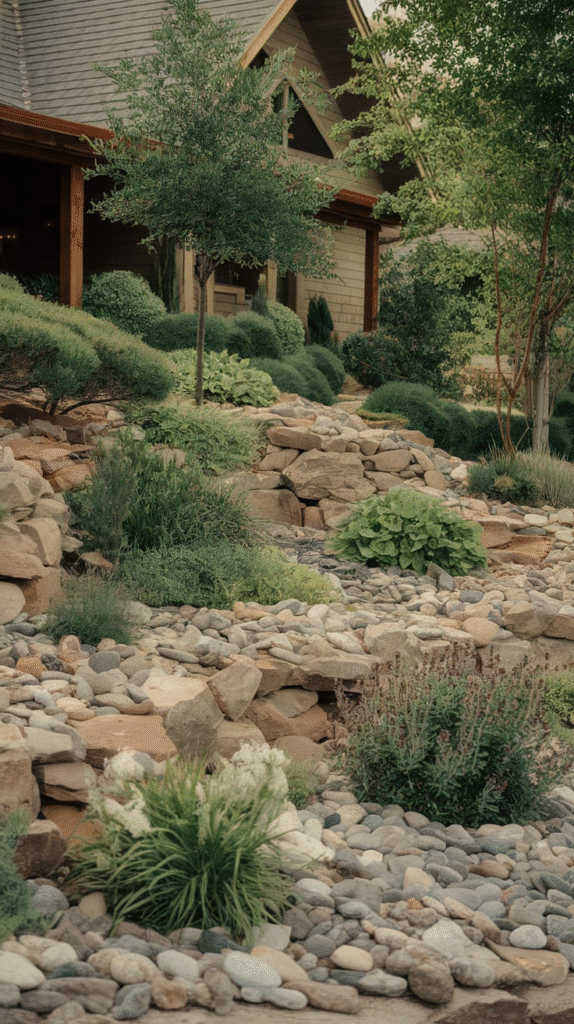
The key to making any rock bed look polished is good edging. Pavers, metal strips, or even bricks keep rocks from spilling into the lawn and add a visual outline that screams “I’m well-designed!”
I once used black steel edging with granite chips for a clean, crisp finish around a modern-style home. Not only did it hold everything in place, but the black line against the light gravel made everything pop like a shadow outline.
10. Rock Beds with Stepping Stones
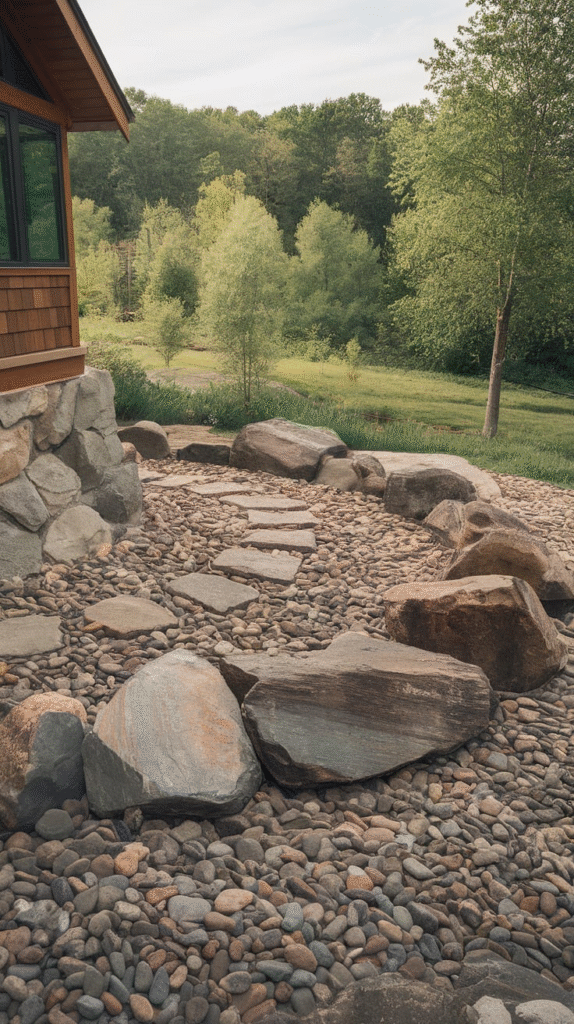
Blend functionality with aesthetics by laying stepping stones through rock beds that wrap around your house. These paths are perfect for utility access, like reaching the A/C unit or water spigots, without trampling your plants.
I built one that led from the back gate to the shed, threading it through a bed of smooth river rock. It felt like creating a secret garden path, minus the overgrown vines.
11. Coastal Vibes with Coral or Crushed Shell Rock
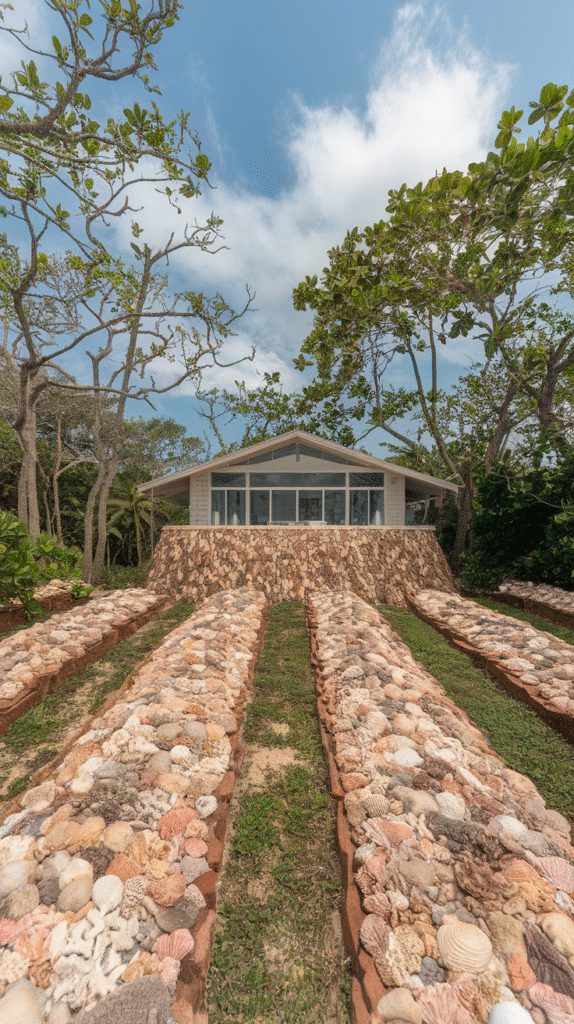
If you’re into beachy aesthetics, crushed shell or coral rock beds might be your jam. These are light, airy, and perfect for coastal-themed homes.
We tried this for a friend’s cottage-style exterior. Coupled with blue hydrangeas and white trim, it looked like a Cape Cod daydream. And best of all? It’s surprisingly effective at keeping slugs and pests away from plants.
12. Stacked Stone Borders with Smaller Filler Rock
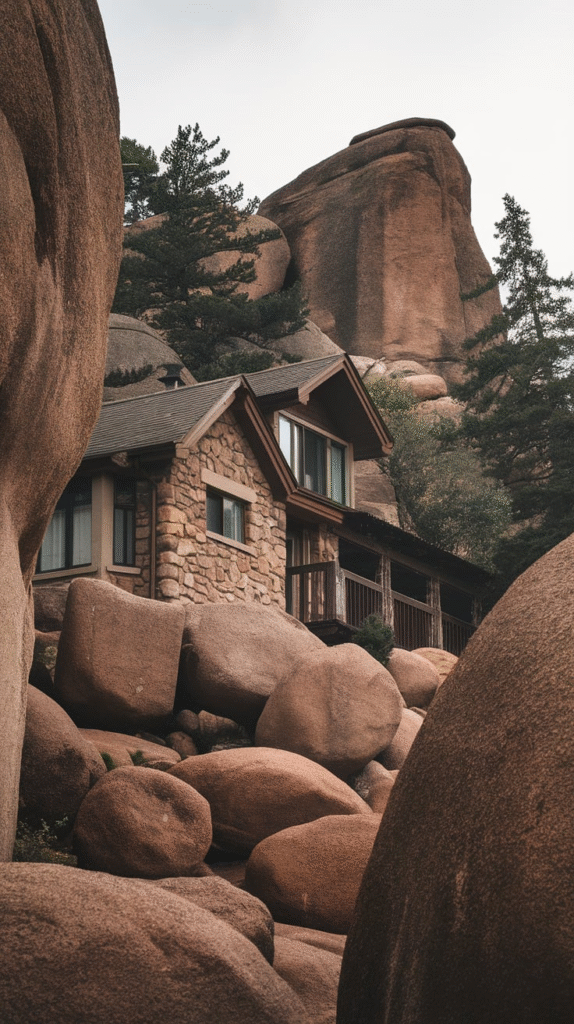
Combine stacked stone walls with smaller gravel or river rock as filler for a terraced, layered look. This is ideal for homes with slight elevation changes or hilly landscapes.
I built this with my dad on a slope by the back door. The rocks hold in soil, add texture, and provide planting pockets between the layers. Now, that tricky slope is one of the most interesting parts of the yard.
13. Rock Beds Under Eaves and Gutters
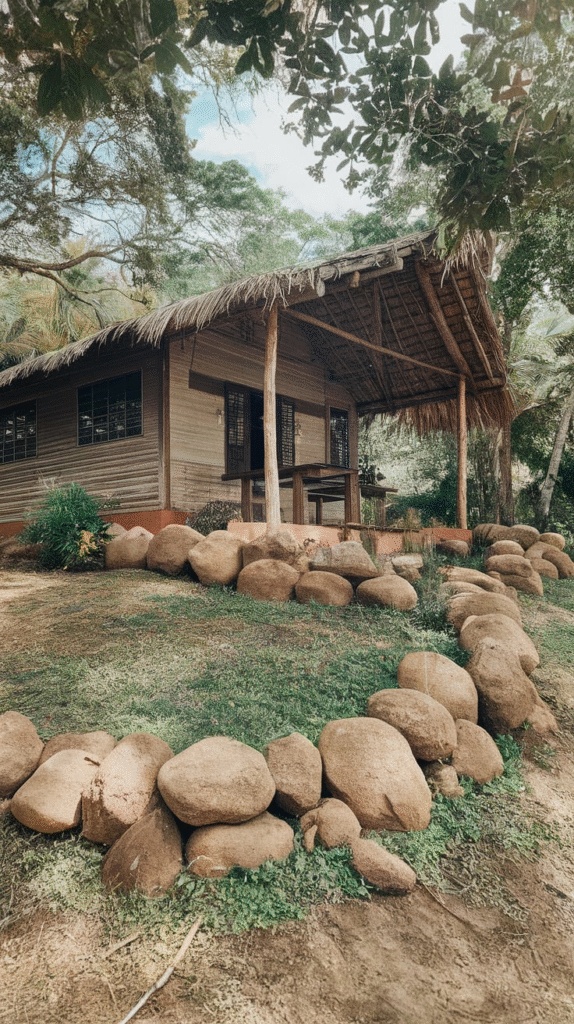
One of the best functional uses of rock beds is beneath eaves and gutters, especially where rainwater hits hard. Rocks prevent soil erosion, splash marks on siding, and clogged mulch.
Use round river rocks for softer aesthetics or angular stones like crushed granite for a more rugged appearance. Just don’t skip the landscaping fabric unless you love weeding.
14. Black Basalt Rock for a Contemporary Flair
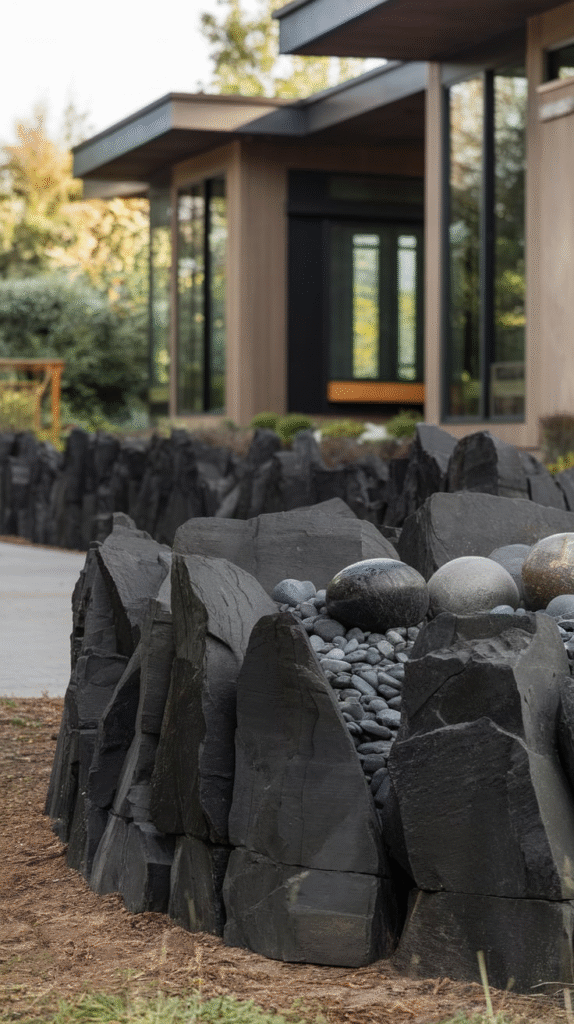
If you’re aiming for ultra-modern, black basalt rock beds are bold and sleek. These deep-toned stones absorb sunlight and pair beautifully with metal, concrete, or white walls.
I once paired them with ornamental grasses and corten steel planters in a minimalist yard. The contrast was so chic, I almost regretted not wearing sunglasses just to look at it.
15. Colorful Rock Combinations for Artistic Impact
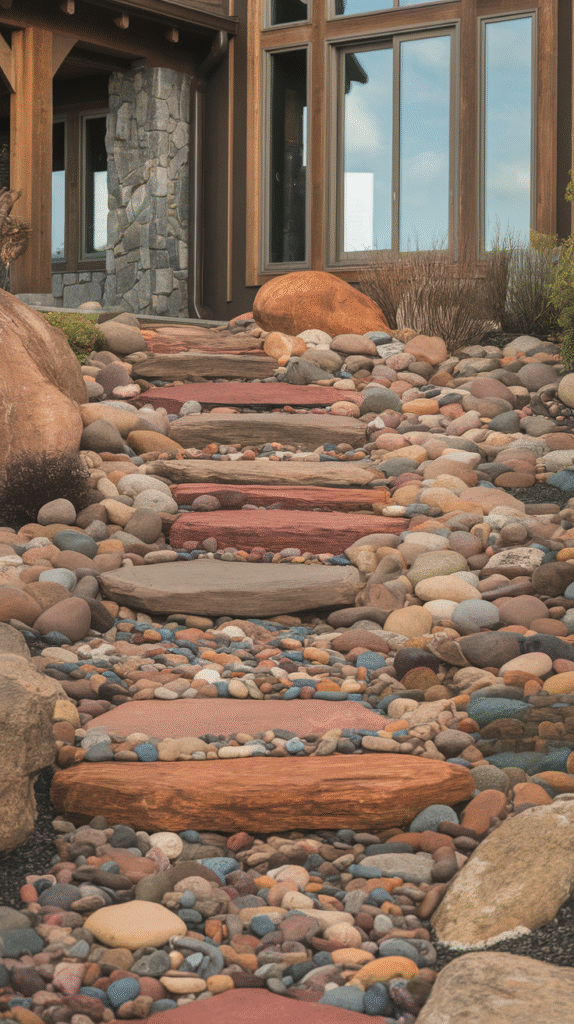
Who says rocks have to be neutral? Use a mix of colored stones—red lava, white marble, gray slate—to create patterns or mosaics that double as art installations.
One client wanted a spiral pattern near her front steps using multiple rock shades. It took a little planning and patience, but the final result turned her walkway into a literal conversation starter.
16. Low Rock Mounds for Elevated Design
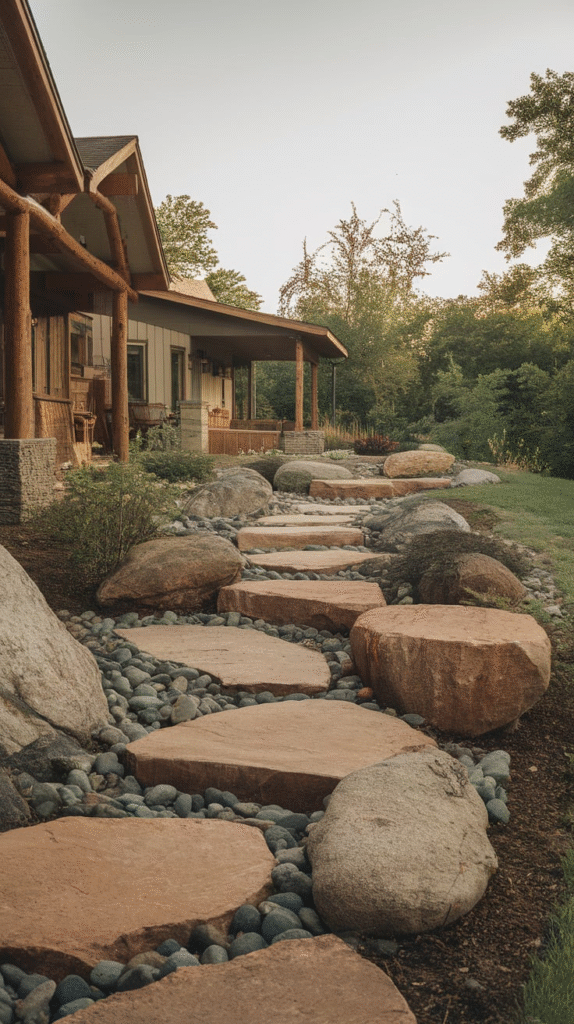
Instead of keeping everything flat, create small mounds or berms using fill soil topped with rock. This adds height and breaks up the monotony around the perimeter of your home.
A landscape architect once told me, “If your eye travels in a straight line across your yard, you’ve failed.” Ever since then, I’ve been sneaking in little hills here and there—and yes, with rock beds crowning them like little outdoor tiaras.
17. Creeping Groundcovers Through Rocks
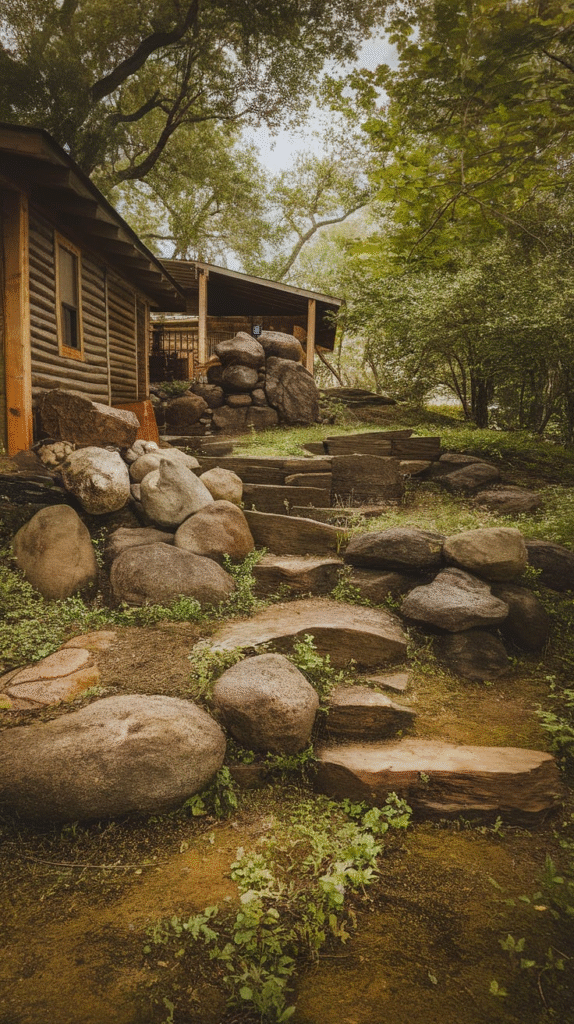
Incorporate groundcovers like creeping Jenny, blue star creeper, or woolly thyme into your rock beds. They snake their way between stones and soften the whole look, offering both color and coverage.
I did this around a flagstone path with gray pea gravel. Within a few months, the tiny green tufts started popping up between stones, making the whole path look like it had been there forever—natural, charming, and fuss-free.
18. Rock Beds with Solar Uplighting
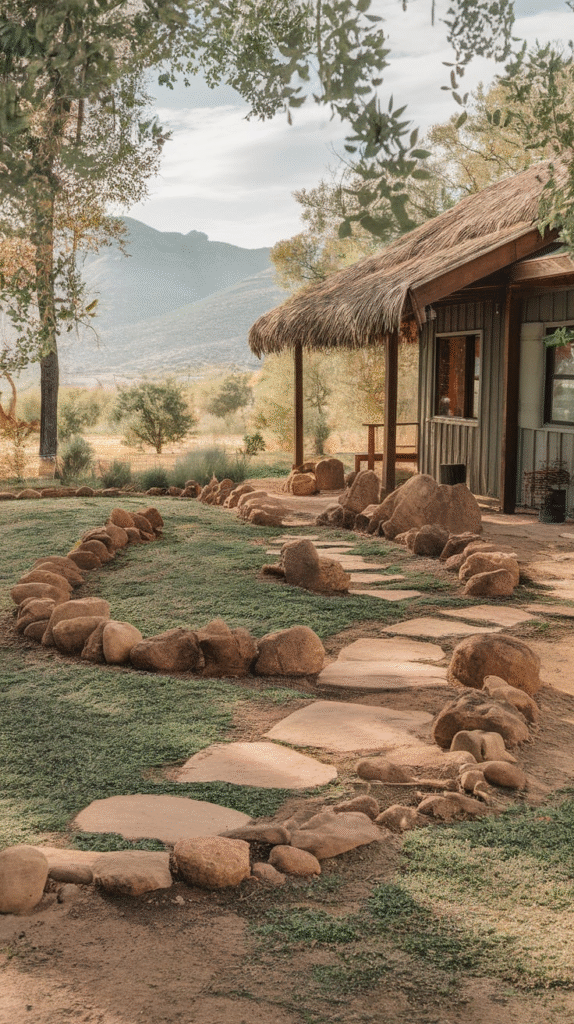
Want to turn your rock bed into an evening feature? Install solar-powered uplights or pathway lights among the rocks to highlight textures, plants, or your home’s architecture.
One of my favorite projects was placing soft amber uplights among a bed of smooth river stones and spiky grasses. At night, the whole area glowed with the kind of ambiance you usually only get at fancy garden parties.
Conclusion
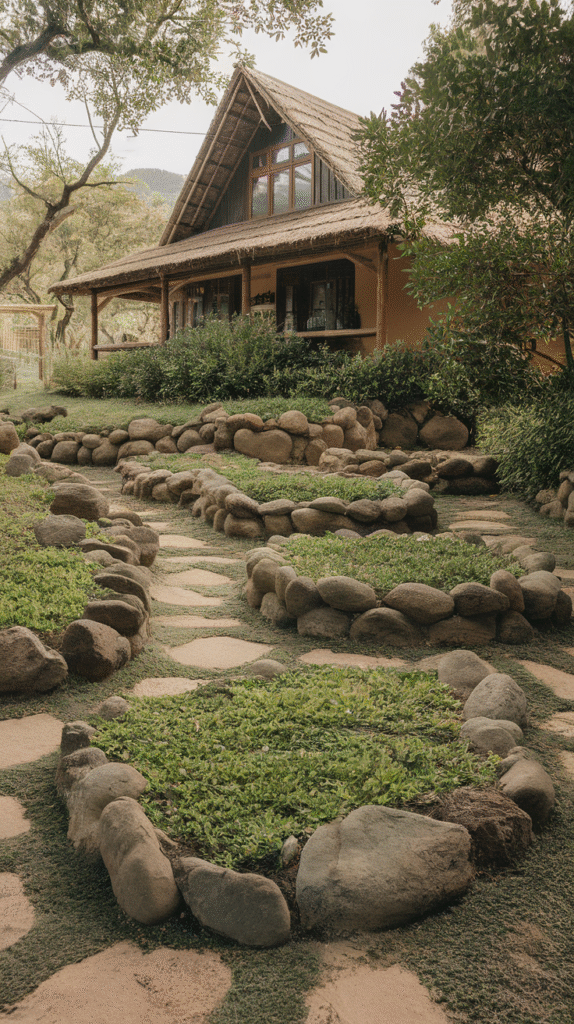
There you have it—18 rock bed ideas that prove these humble landscaping heroes are anything but boring. Rock beds are like good supporting actors. They don’t beg for the spotlight, but they elevate everything around them.
Whether you’re dealing with drainage issues, shady soil, or just a case of yard blahs, a thoughtfully designed rock bed can turn things around—literally from the ground up.
So go ahead. Pick your favorite, grab some gloves, and start laying the foundation for your home’s next visual upgrade. And if anyone asks why your landscaping suddenly looks ten times more put-together, just smile and say, “It’s all about the rocks.”

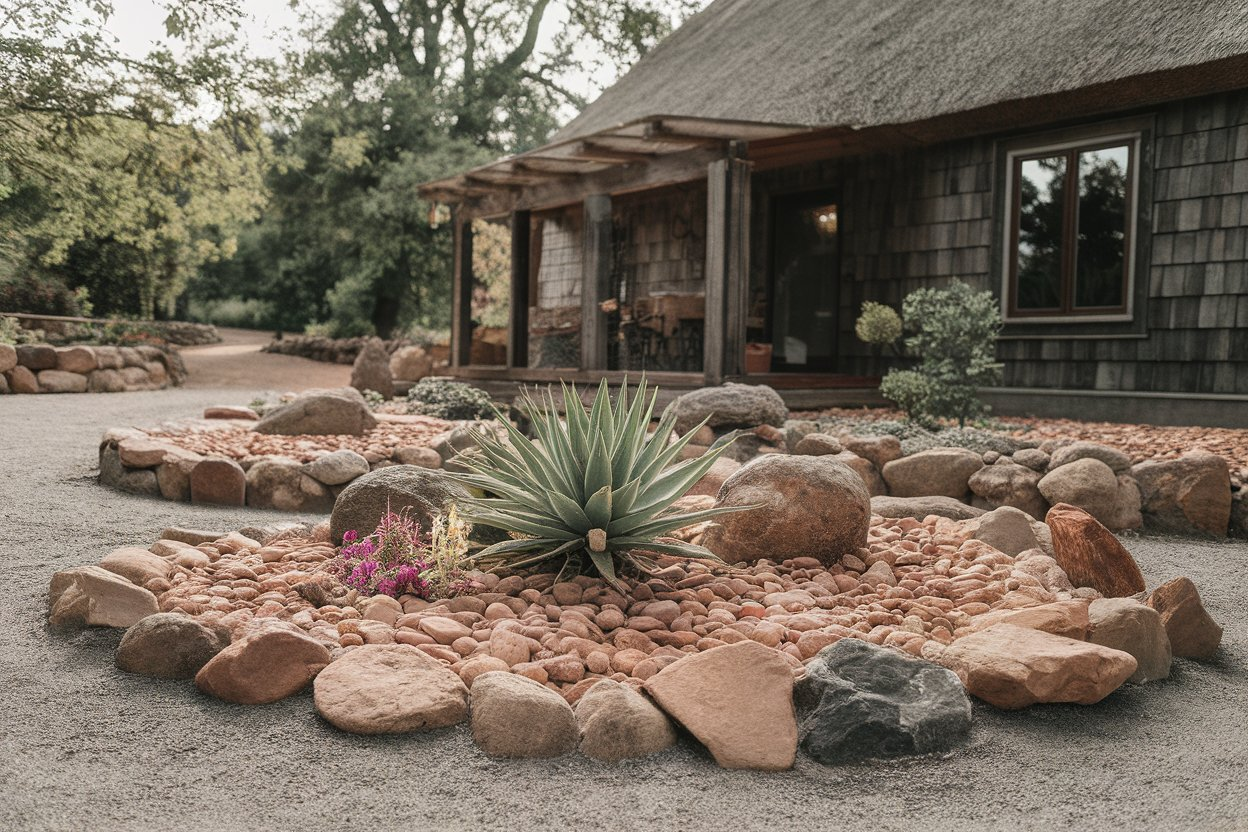
Leave a Reply